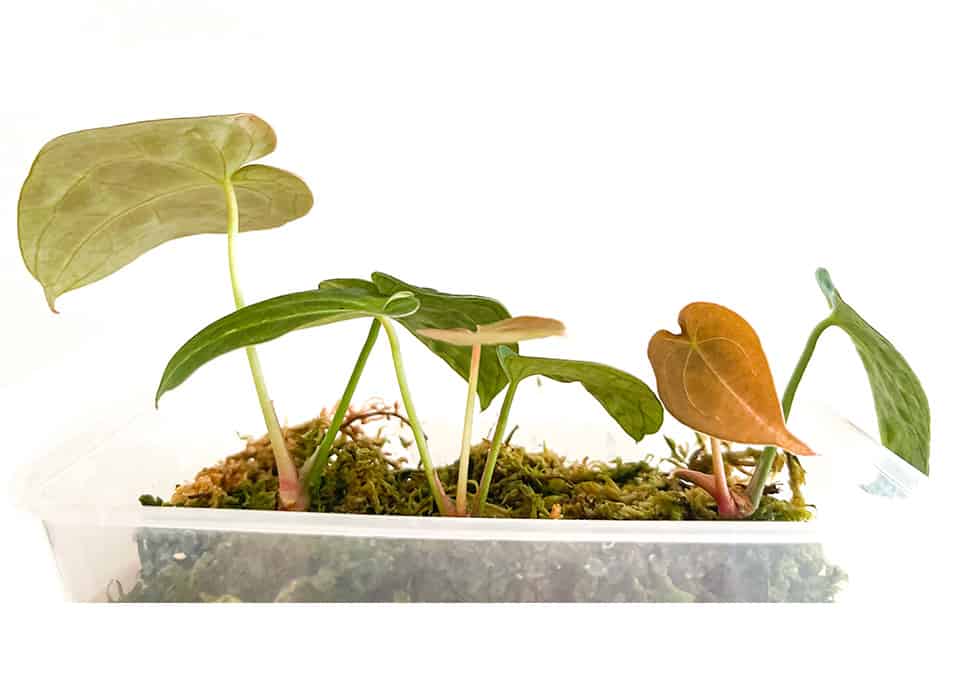If you’re looking for a beautiful, easy-to-care-for anthurium, look no further than the Anthurium forgetii! This tropical plant has dark green leaves and is very sought after its distinctive lack of leaf sinus, or upper lobes. In this post, we’ll go over care tips for keeping this velvet leaf anthurium happy and thriving.
And if you’re an anthurium enthusiast looking for a new way to propagate your plants, read on! This mini-guide will show you how to propagate anthurium forgetii through stem cutting.
Finally, Plant Girl Boss will rank some of the more exciting Anthurium forgetii hybrids. You won’t be able to resist adding them to your collection. So let’s get started!
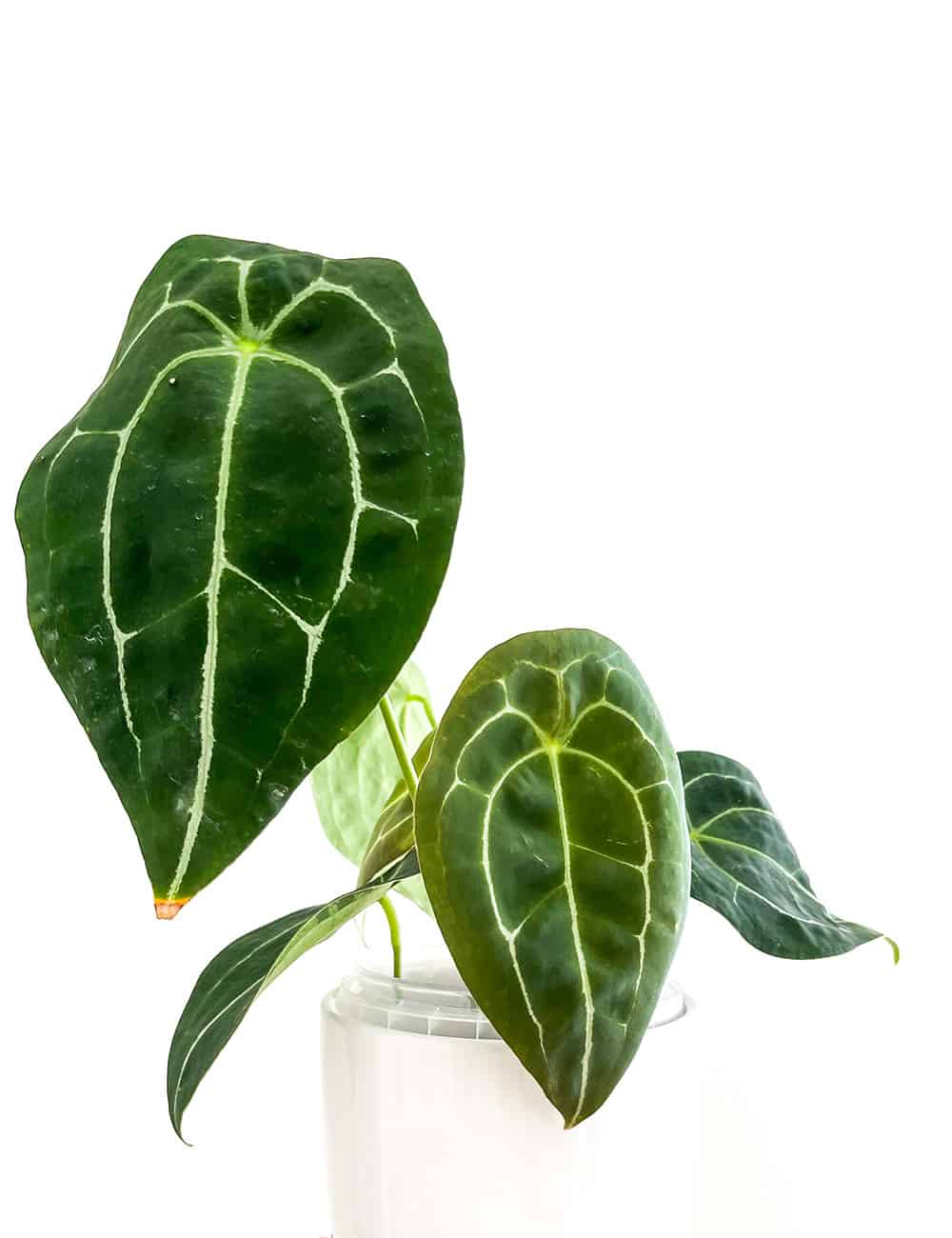
ANTHURIUM FORGETII BASICS
Anthurium forgetii is a species of exotic plants in the Araceae family native to the rainforests of Colombia.
One of the more striking anthurium species, Anthurium forgetii is also one of the easiest to grow. It is very sought after for its distinctive lack of leaf sinus, or upper lobes, so prevalent among other anthurium species.
It is a fast grower that thrives in bright light and is a satisfying plant to grow as it will reward you with new leaves all the time.
The dark green leaves, with their elegant oval shape and sparkly silver veins, will surely brighten your mood every time you look at them.
If you’re looking for a velvet, shimmery, dark green leaf aroid, Anthurium forgetii has you covered.
THE FAMOUS NO SINUS LEAF
Sinus: the portion of a margin that dips in between two lobes.
Anthurium forgetii is one of the most recognizable anthurium species due to its no sinus leaf shape. It looks like a tear drop and makes it one of the coolest houseplants.
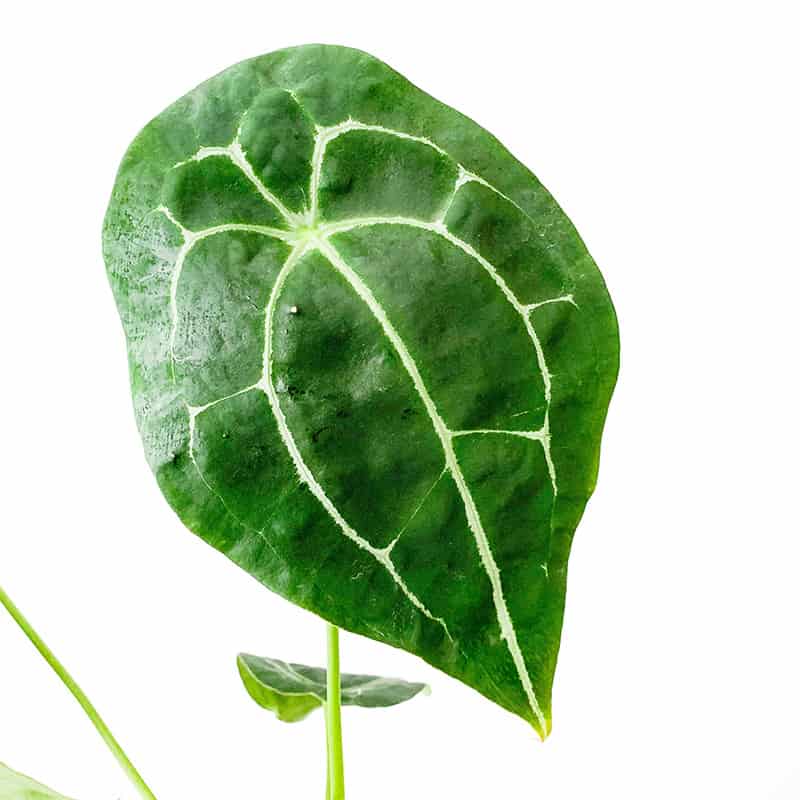
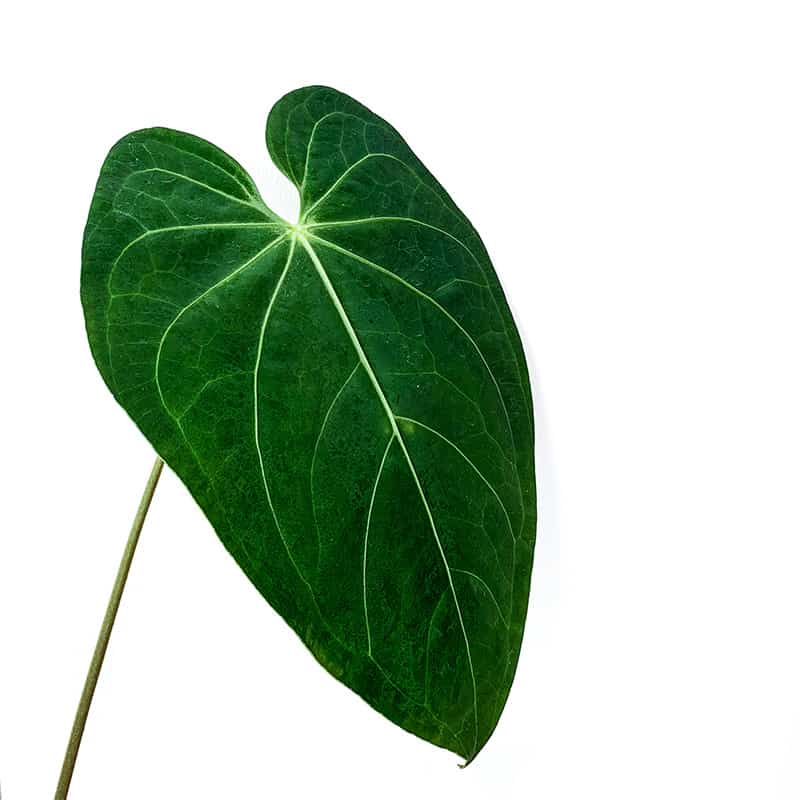
The leaves usually don’t grow to the same size as those of Anthurium magnificum or Anthurium regale but some houseplant enthusiasts managed to grow them big! The foliage is velvety in texture and has an iridescent sheen to them.
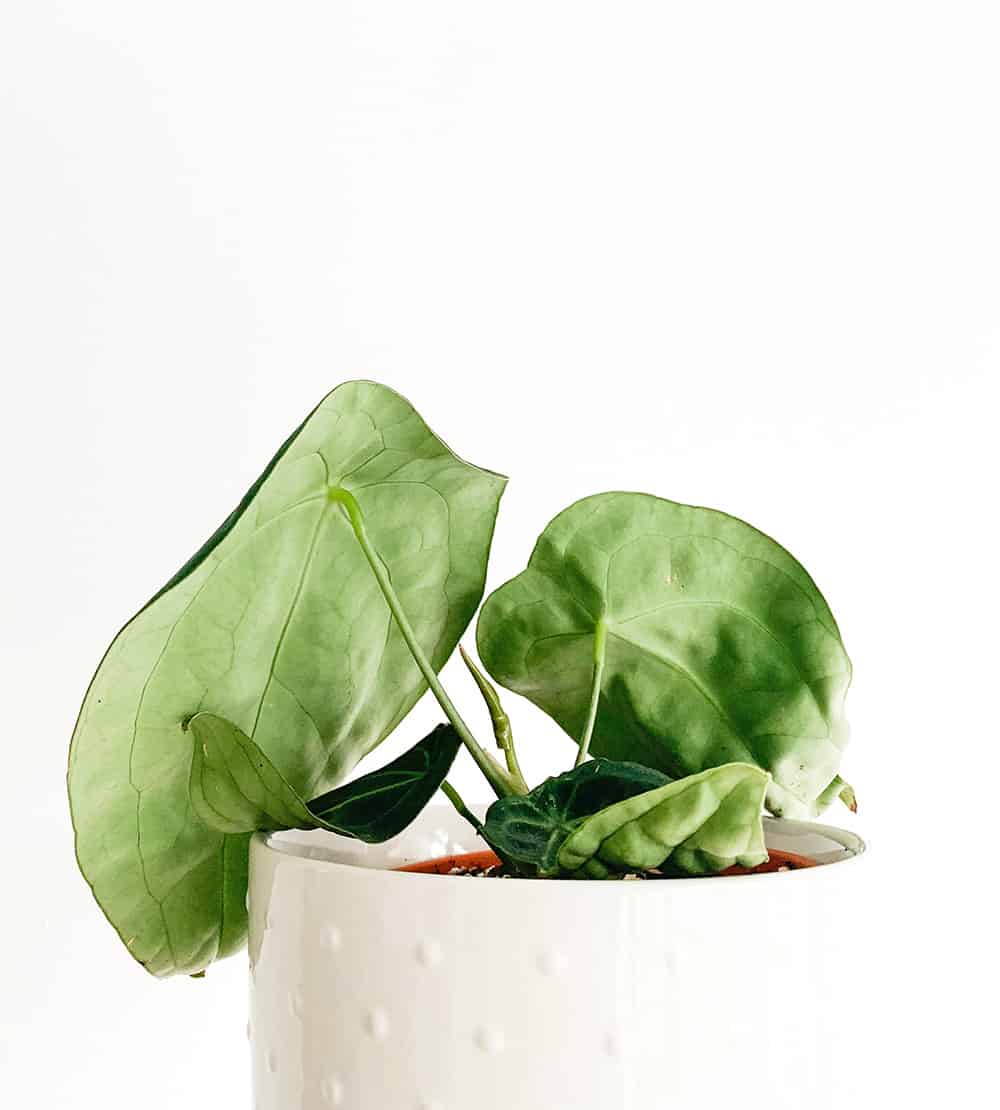
Anthurium Forgetii Inflorescence
Interestingly, an anthurium forgetii inflorescence has a pleasant scent, unlike other anthurium species that have none.
I tried to pollinate Anthurium forgetii with the pollen of Anthurium magnificum I have stored in a freezer, but it didn’t take on.
As it was the first inflorescence of this plant, my guess is it was too immature to be successfully pollinated. Or the pollen from Anthurium magnificum was not fresh enough.
It is best to use fresh pollen as the one stored in the freezer deteriorates quickly. Some experts say it is not viable just after a couple of weeks.
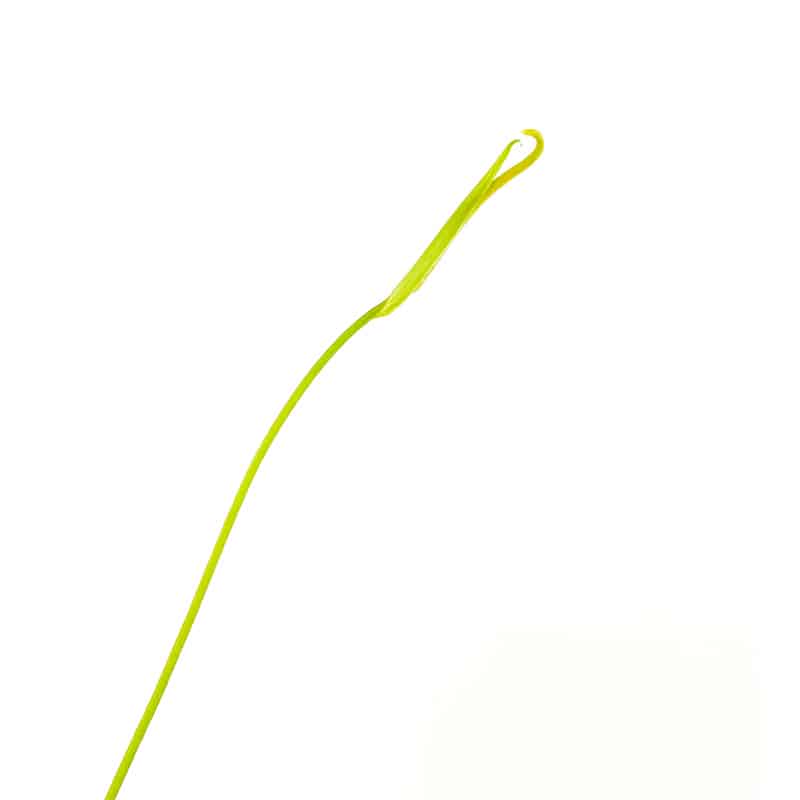
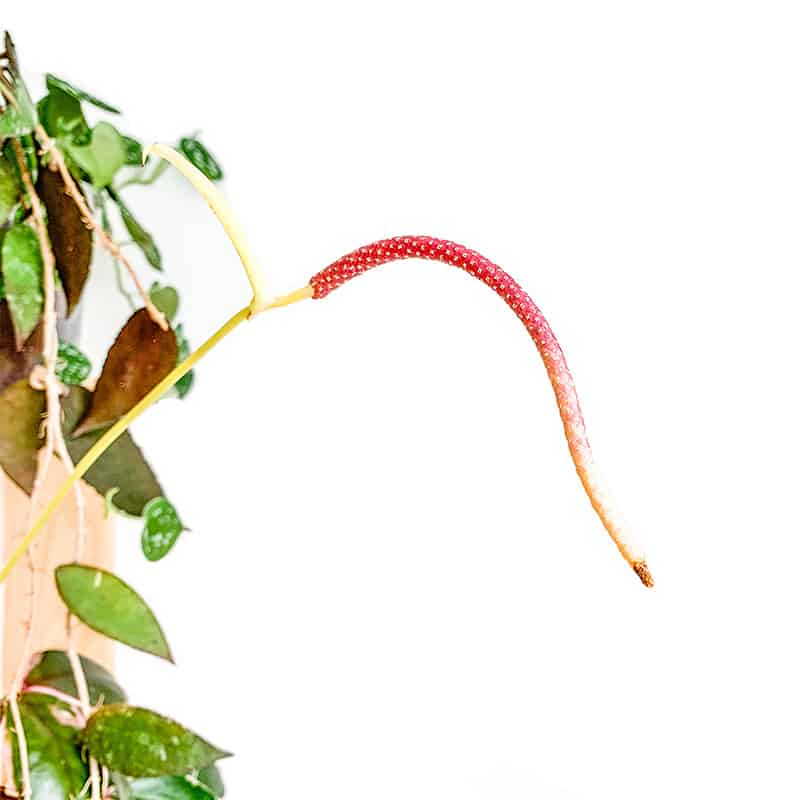
Anthurium forgetii belongs to the Cardiolochium section and, therefore, can be crossed with anthurium species belonging to the same section.
Other anthurium family members that can be successfully crossed with the forgetii are, for example, Anthurium magnificum, Anthurium crystallinum, or Anthurium Ace of Spades.
Anthurium Forgetii White Stripes vs Dark Form
Not a lot of information is known about the Anthurium forgetii species. I have two ‘forms’ of Anthurium forgetii in my collection.
One with more prominent silver veining often referred to as Anthurium forgetii white stripes and an Anthurium forgetii dark form.
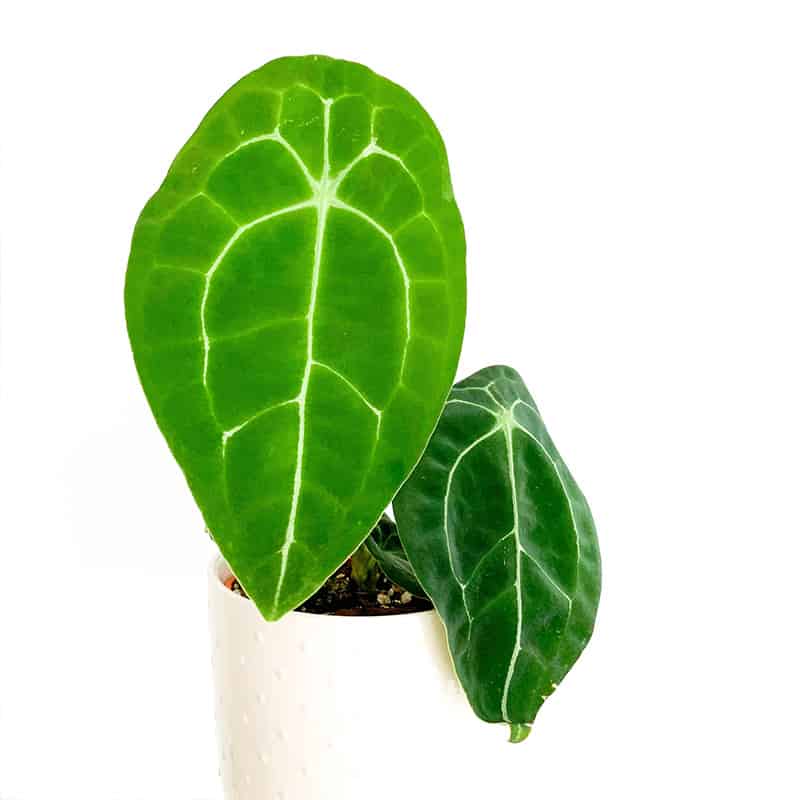
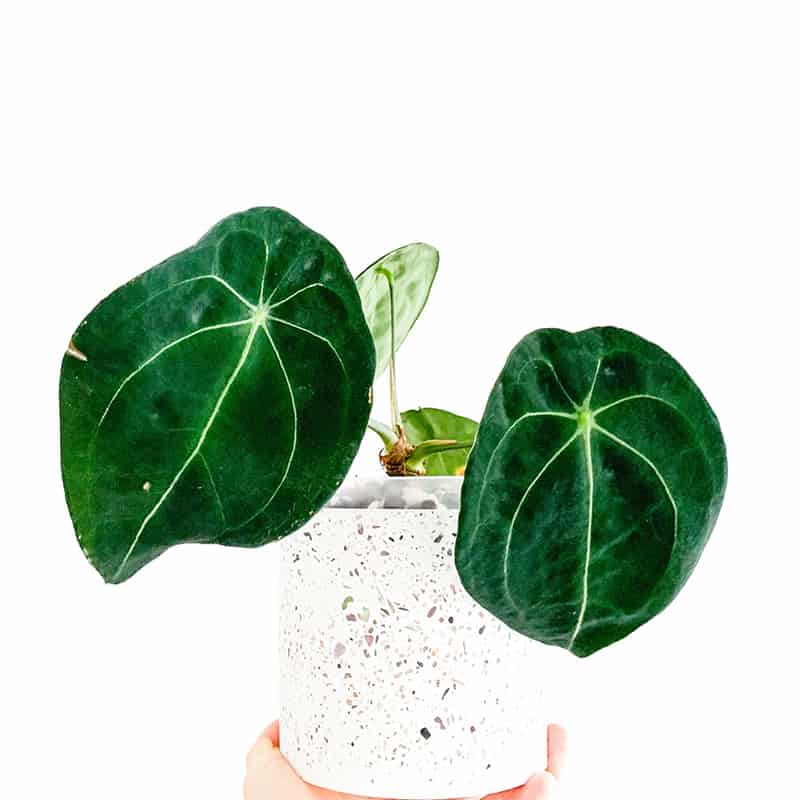
At this point, I should also note that Anthurium forgetii white stripes and Anthurium forgetii silver are the same plants, just named differently for marketing purposes.
Check out some of the coolest Anthurium forgetii hybrids at the end of this post.
Anthurium Forgetii Care Tips
Anthurium forgetii is one of the easiest anthuriums to grow, definitely not on the fussy side like Anthurium warocqueanum or some other thinner leaf anthurium such as Anthurium lineolatum.
Anthurium forgetii care is pretty much the same as for other dark leaf anthuriums like Anthurium magnificum or Anthurium crystallinum.
LIGHT
Anthurium forgetii likes bright indirect light but no direct sunlight. Although it will do OK in a medium-light environment, the plant’s growth rate might be slowed. I grow mine under the grow lights.
POTTING MIX
If you want your Anthurium forgetii to thrive and root easily, give it a chunky well-draining soil mix. I use a soil-less potting mix that consists of a mix of orchid bark, perlite, horticultural charcoal, and coco husks. It is a fast grower that needs more frequent repotting. All my Anthurium forgetii plants grow extensive root balls quickly. The potting mix should stay moist but not soggy.
FERTILIZER
Fertilizing Anthurium forgetii is a must! I add worm castings to the initial potting mix and then slow-release fertilizer every three months and liquid fertilizer with every watering. I find Anthurium forgetii to be quite heavy feeders like most anthuriums and never experienced plant decline due to overfertilization. So provide your plant with needed nutrients!
TEMPERATURE AND HUMIDITY
The tropical rainforest is the native environment for most aroids, and unsurprisingly your Anthurium forgetii will thrive in warm temperatures and high humidity. Fear not, though, it will do very well at normal room temperature. It is not as dependent on humidity as Anthurium warocqueanum, for example.
Common Problems & How to Deal with Them
Anthurium forgetii is one of the easiest aroid plants to grow, yet in your journey as a plant grower, you’ll invariably going to come across some issues.
I’ve been growing anthurium forgetii for two years now, and during this time, I’ve come across the following problems:
Yellow blotches forming on leaves
The velvet leaves anthuriums are generally prone to fungal and bacterial infection. If you see translucent yellow spots forming on the leaves, you might have a fungal or bacterial infection.
Usually, this happens when the soil mix is too dense. While you might not save the infected leaves, spare your other leaves by drenching the soil with a copper solution. Copper fungicide worked magic for me.
Browning or crisping of the leaves
One of the more common problems with Anthurium forgetii, and other velvet leaf anthuriums, are brown edges or crispy leaves. This usually happens when the plant doesn’t receive enough water or humidity levels are too low.
If you grow Anthurium forgetii in a room temperature, as I do, try to increase humidity levels around the plant by placing a humidifier close by. Also, check on your watering to make sure you don’t dry out the potting mix too much.
Root rot
Declining plant with yellowing leaves and no apparent pests visible? Check for root rot. If you have a well-draining potting mix, the root rot should not be an issue.
But once you detect rotten roots, cut them off and re-root the plant. Sometimes the plant is too far gone, and the only way to save it is to propagate through stem division. Read the section below to find out how to propagate anthurium through stem division.
Spider mites
I made the mistake of placing one of my Anthurium forgetii next to an Alocasia scalprum. And if you don’t know, Alocasias are spider mites magnets! Invariably my forgetii caught the pests.
The only method I found that works on spider mites is a systemic pesticide. Neem oil is hailed as a natural solution to getting rid of all sorts of plant pests, but it never worked for me.
Anthurium Propagation through Stem Division
Importing plants carries many risks. Will the plant acclimatize to your indoor environment? How well was it packed during shipping, and how long was it in transit?
When you import plants, you will often find yourself in a situation where the plant arrives in less-than-perfect condition. Yellowing or loss of some leaves is quite normal and should be expected after all the plant is going through a major shock.
But what do you do when the plant arrives with all the roots dried up or rotten?
For one, you should request a refund or a replacement.
But if at least some of the roots are intact, you can focus on rehabbing the plant. I have a more in-depth guide on how to acclimatize a newly imported plant.
If you lose all the roots, you need to re-root the plant and restart it. If the stem is long enough, you can chop it up and create multiple plants.
Chopping up the stem will force the plant to push out new growth as long as there is a growing eye on the chopped part of the stem.
This is what I’ve done with my Anthurium forgetii when it arrived with most of its roots gone. Here is a mini-guide on how to propagate Anthurium from the stem.
How to Propagate Anthurium Through Stem Division – A Mini-Guide
1. Separate the plant from the main stem
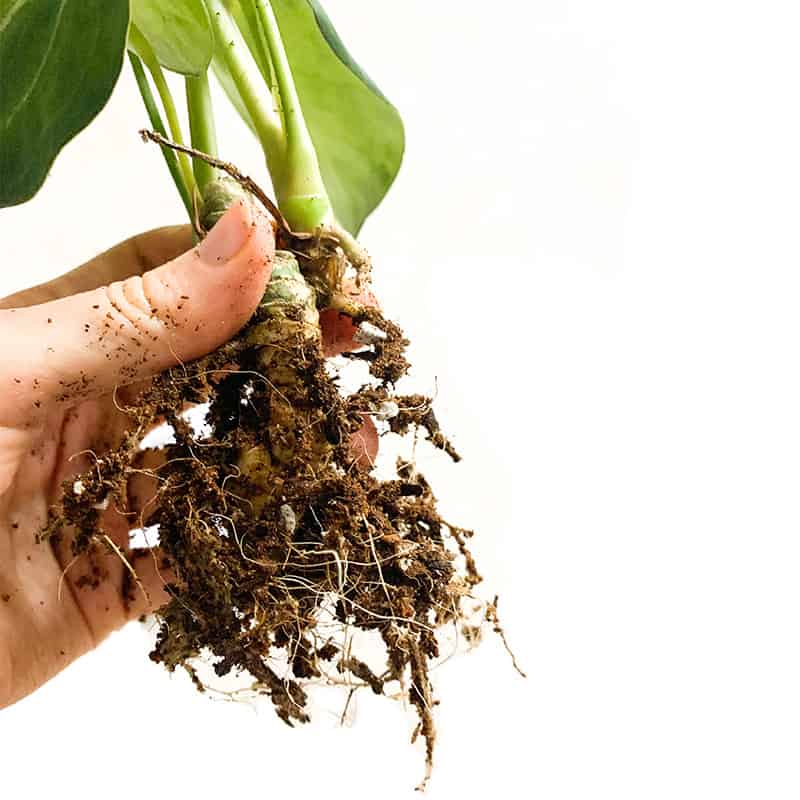
On my Anthurium forgetii, the healthy roots were all growing directly from the new stem, so there was minimal risk of separating the plant from the old stem.
2. Re-root the plant in water
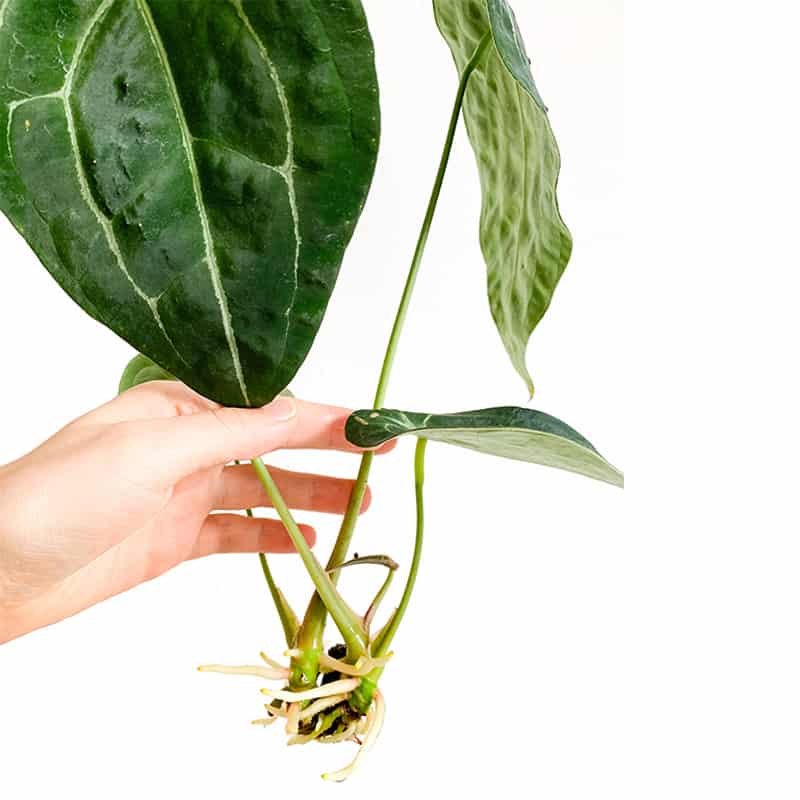
Re-root the plant first in water and then in sphagnum moss. Keep the plant in water until you see the white roots starting to grow. Once they reach about 3-5cm in length, move the plant to damp sphagnum moss. I found Anthurium forgetii loves moss and pushes new roots very fast.
3. Cut off the dead roots

If the roots attached to the old woody stem are already dead, cut them off. You will be left with the bare chonk. The internodes on Anthurium forgetii are very close to each other, and it is challenging to tell where new growth will emerge from. You should leave enough room for error.
4. Chop the stem and clean it
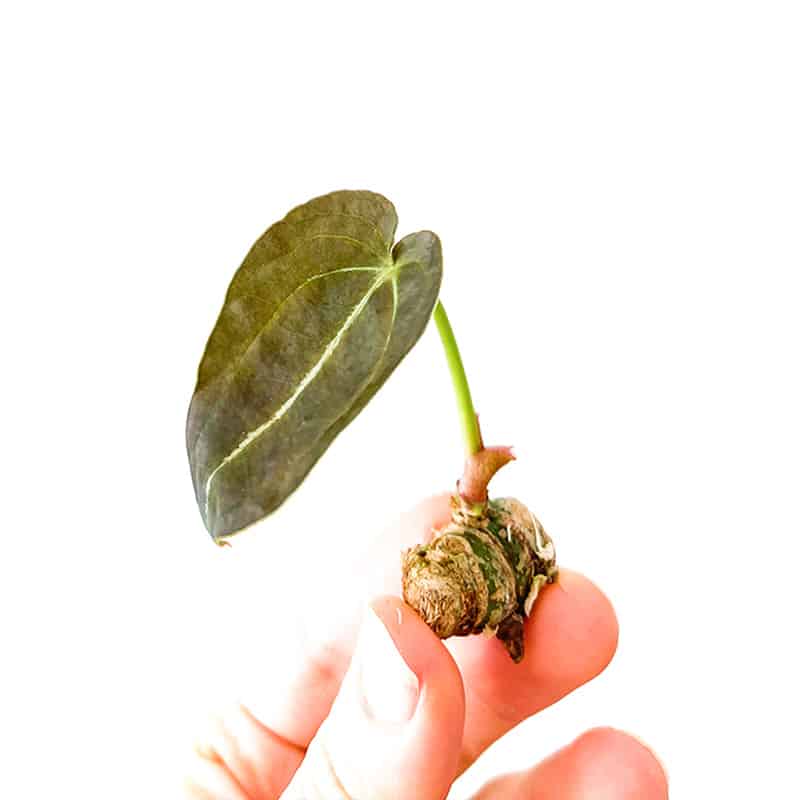
Since the chonk was quite long, I chopped it into three pieces. I could have cut it into more pieces, but I didn’t want to risk it as not all growth points will activate.
After the chop, rinse the pieces with hydrogen peroxide to remove any possible rot bacteria. Then put the chonks on top of damp sphagnum moss in a clear plastic container with a lid on top of it.
Place it under grow lights in a warm environment. After a couple of weeks, the new growth activated, and little Anthurium forgetiis began to grow.
Interestingly, the juvenile leaves emerge cordate in shape with sinuses, unlike the mature leaves. I’ll be curious to see when the characteristic no sinus leaves start to appear.
If you’re interested to learn how to propagate an anthurium from seeds, check out my other blog: Anthurium Gracile: How to Propagate Anthurium from Seeds
ANTHURIUM FORGETII HYBRIDS YOU MIGHT WANT NOW
Anthurium forgetii is not hybrid itself but a species, which is frequently hybridized.
Given the enthusiastic response to Plant Girl Boss’ previous ranking of Anthurium warocqueanum hybrids, this time we’ll rank the most interesting Anthurium forgetii hybrids.
Buckle up and keep your wallet safe, as you might be tempted to look for some of these amazing hybrids. I know I am!
1. Anthurium Forgetii x Luxurians
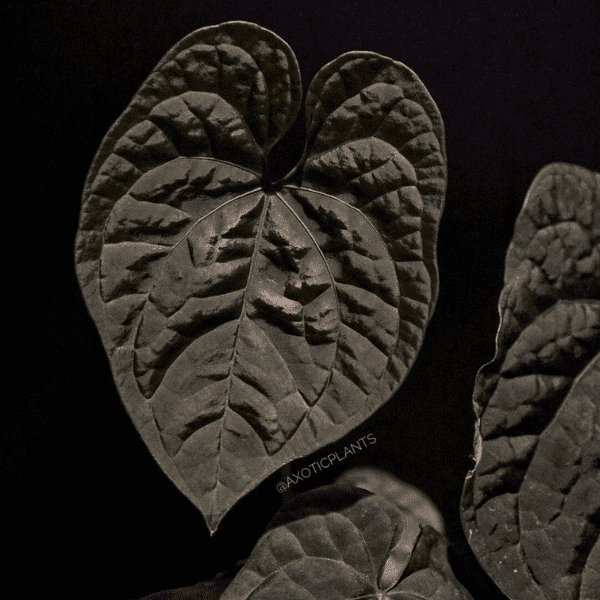
Anthurium forgetii x luxurians hybrid tops Plant Girl Boss’ ranking! Black anthurium anyone? The pebbled textured leaf takes after the luxurians and is absolutely stunning. If you want to check out another luxurians hybrid, check out this cross of warocqueanum x luxurians.
2. Anthurium Forgetii x Dorayaki
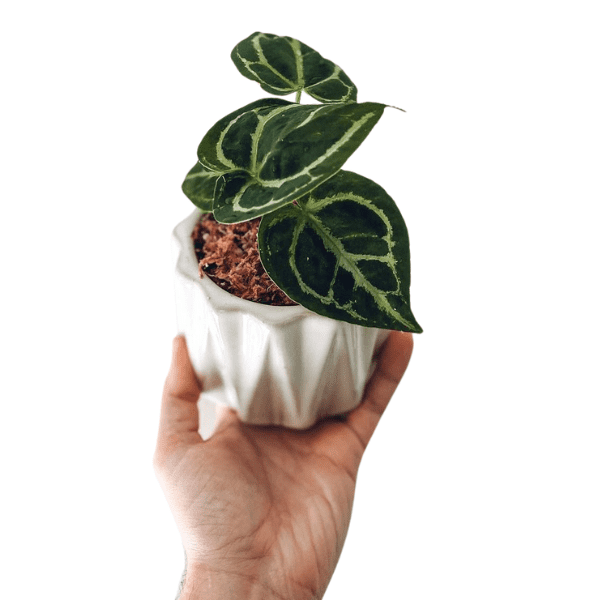
Anthurium forgetii x dorayaki ranks at number #2 on our ranking. How cute is this Anthurium forgetii hybrid?
3. Anthurium Forgetii x Veitchii
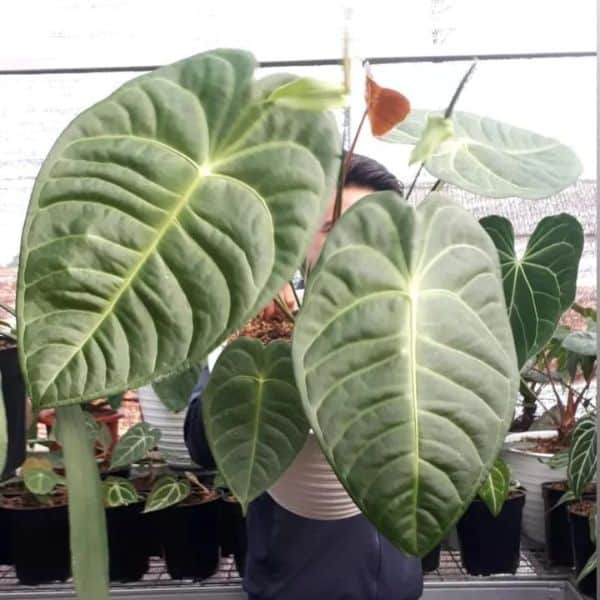
Anthurium forgetii x veitchii comes in third on the Plant Girl Boss’ list of the coolest anthurium forgetii hybrids. The characteristic no sinus leaf after forgetii and the ribbed texture after veitchii add this aroid to the most-desired-plants-ever wishlist.
4. Anthurium Forgetii x Papillilaminum
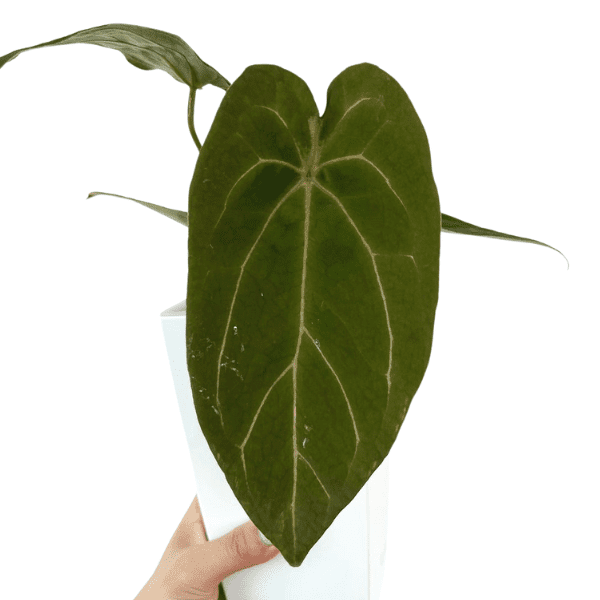
Anthurium forgetii x papillilaminum comes in fourth on the Plant Girl Boss’ list of the coolest anthurium forgetii hybrids. The characteristic ears and muted veining makes this an exceptional hybrid.
